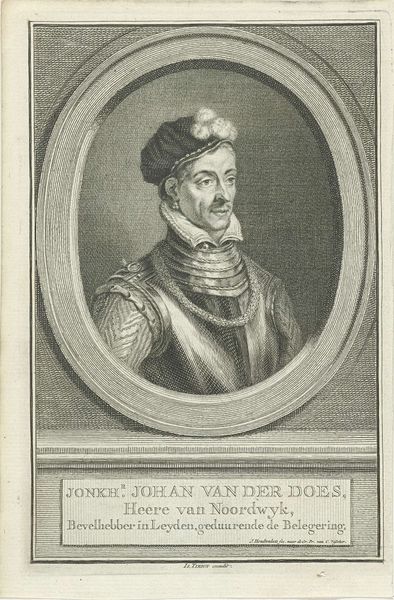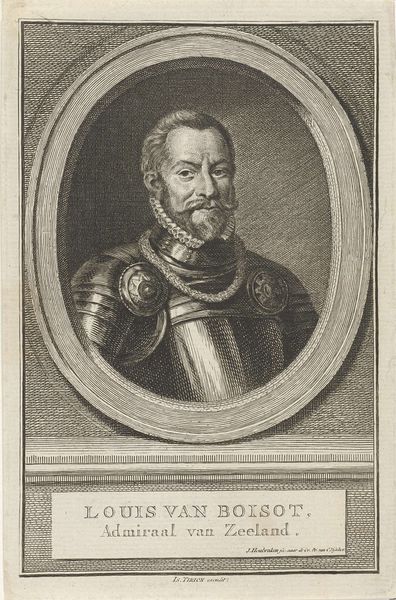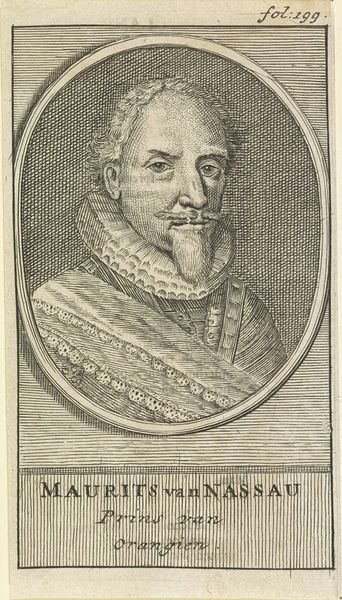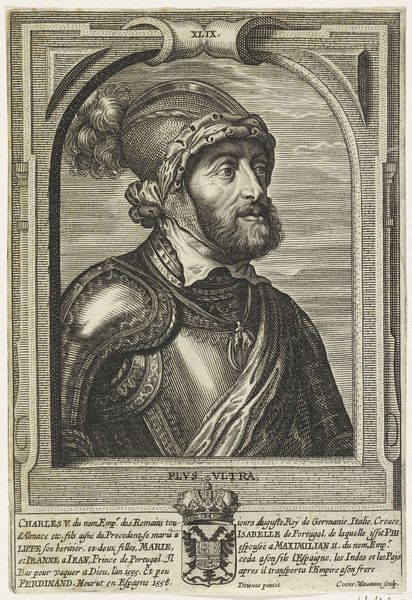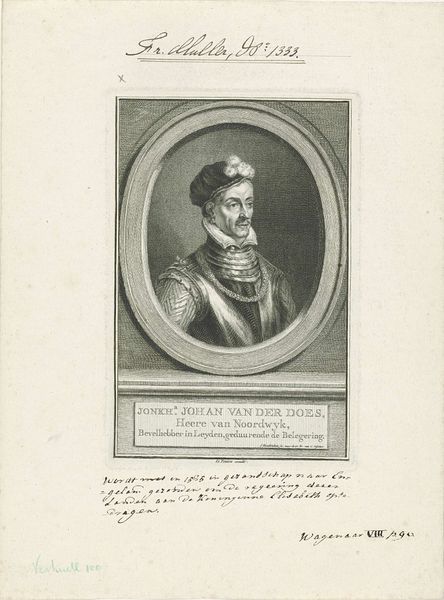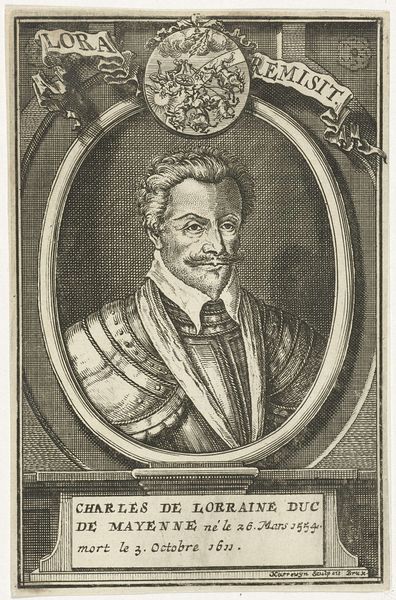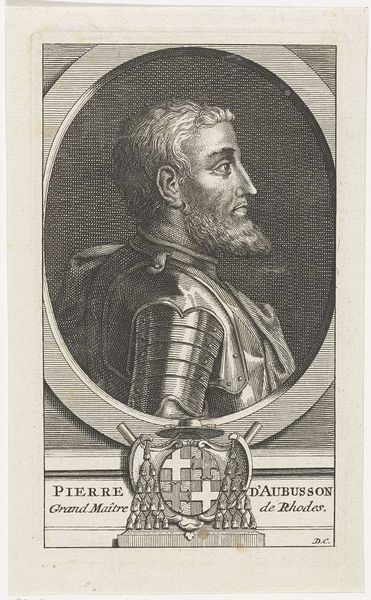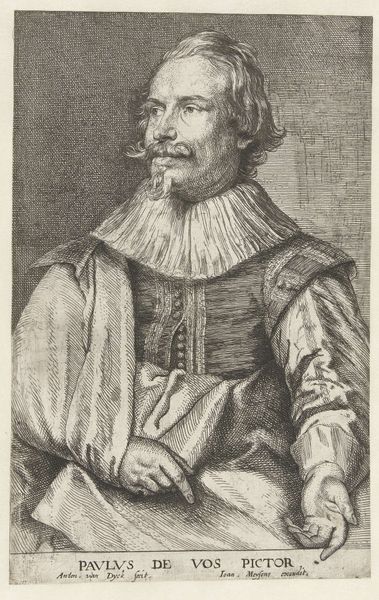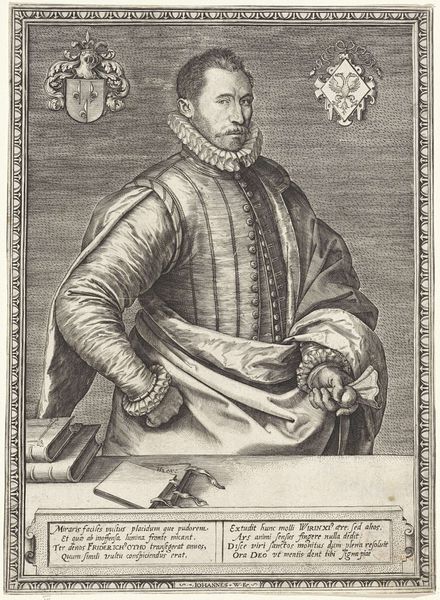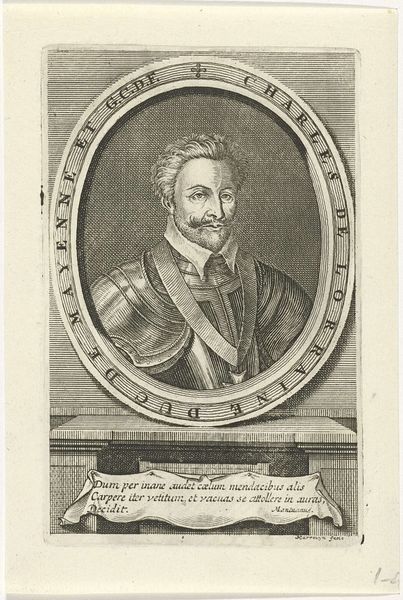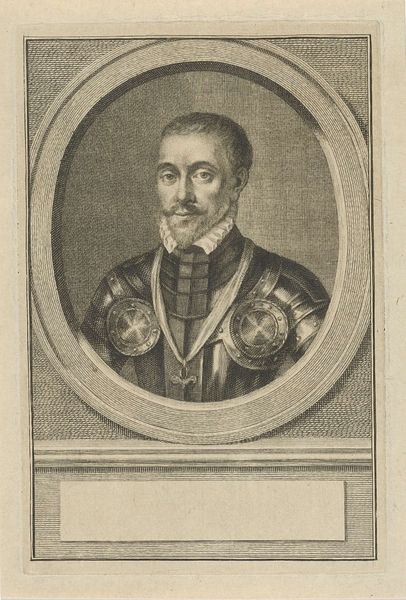
print, engraving
#
portrait
#
neoclacissism
# print
#
history-painting
#
northern-renaissance
#
engraving
Dimensions: height 179 mm, width 114 mm
Copyright: Rijks Museum: Open Domain
Curator: What strikes me is the man’s calm authority. He has this air of quiet confidence, like he's seen things, but isn't about to spill the beans unless he absolutely has to. Editor: It's interesting how an engraving, something mass-produced, seeks to convey that sense of individual power and importance. Look at the sheer labour that went into creating the fine lines that define the contours of Johan van der Does, right down to his lace collar and gleaming armor. This print from the late 1790s comes to us via Jacob Houbraken, and we can find it here at the Rijksmuseum. Curator: Yes, and those lines almost vibrate, don’t they? It's like capturing the essence of his character – the steadiness, the almost imperceptible hint of weariness around the eyes. There’s so much story there, just simmering beneath the surface. It's quite poignant when you think about it. Editor: It's also about control, wouldn't you say? The very act of engraving—cutting lines into a metal plate, inking it, and pressing it onto paper—it is an incredibly meticulous, almost performative task that speaks of craftsmanship, demanding labor in the service of representation. And look at the frame around him. This insistence on geometric framing, on controlling the edges feels as much like power as freedom. Curator: Framing. That is clever, it gives us this intimate almost, but that shape also contains him, like history has fixed him in place. Editor: The portrait memorializes a military commander. I wonder, what kinds of social relations made possible the creation and the later distribution of this image of Johan van der Does? Prints democratize images, yet portraits reinforce the status of the wealthy. Curator: Perhaps the success of these portraits really lies in giving us a space for projection; they act as Rorschach blots onto which we splash our own hopes and worries and longings about our leaders, even now, centuries later. I see his portrait and can see parts of myself inside. Editor: I agree, our perception is surely tied to current market and economic systems as much as our own longings.
Comments
No comments
Be the first to comment and join the conversation on the ultimate creative platform.


